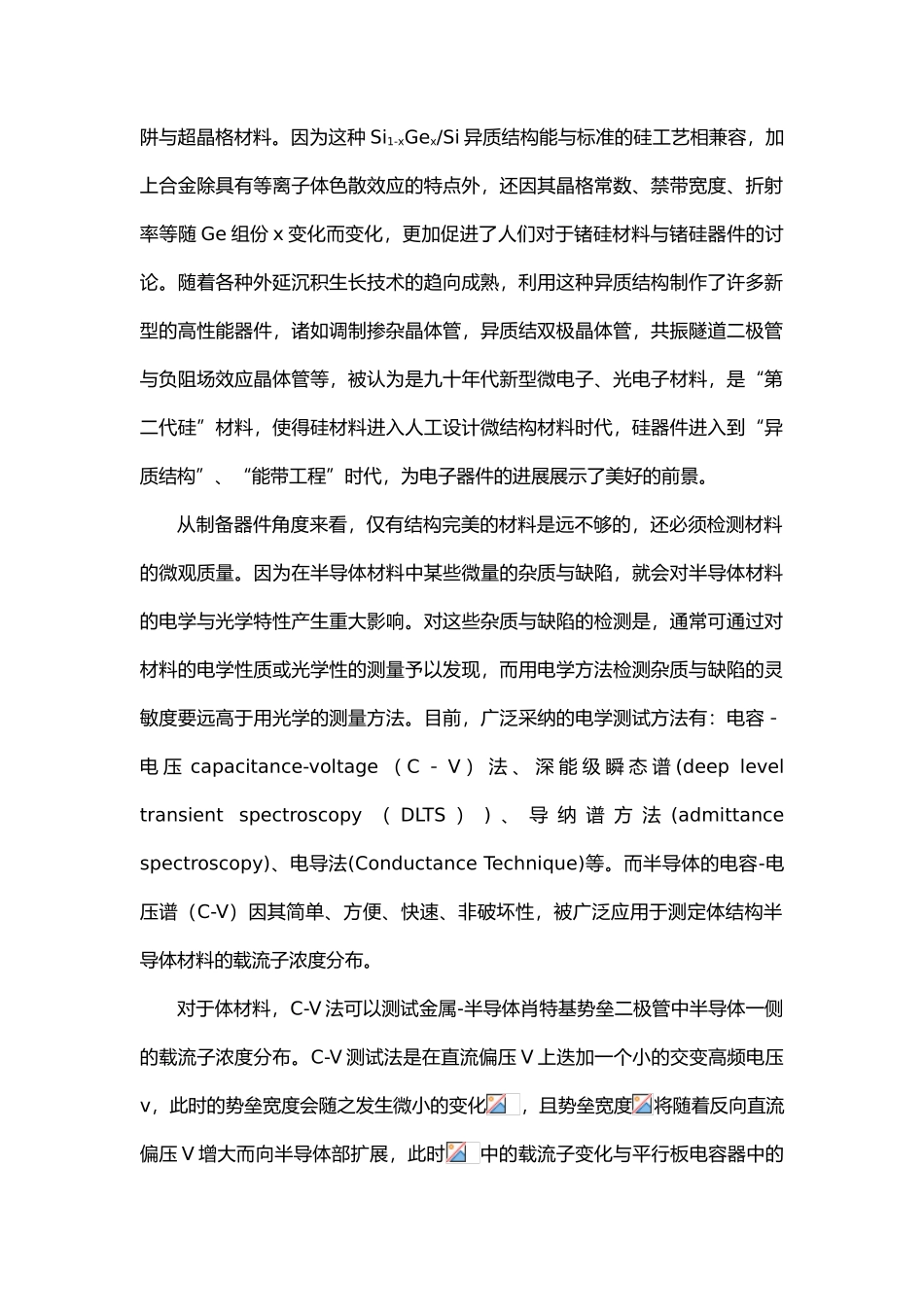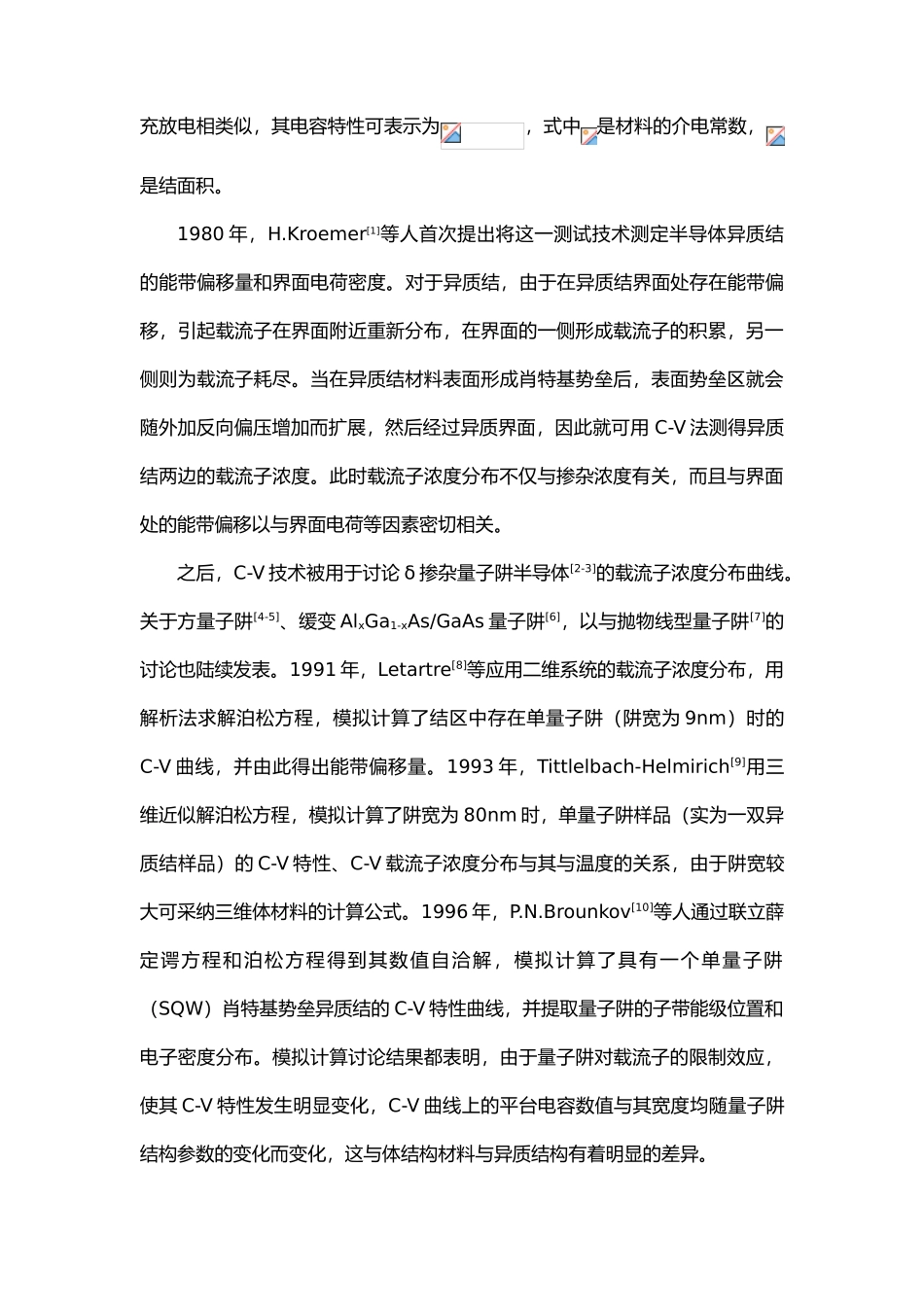用 C-V 法讨论锗硅量子阱结构的电学性质:程佩红指导老师:黄仕华摘 要:基于不同偏压围解析求解泊松方程,得到单量子阱结构电容-电压(C-V)特性的理论表达式。并采纳迭代法数值求解泊松方程得到价带结构图与其随外加电压变化的规律,进而模拟得到锗硅量子阱结构在不同偏压下的载流子浓度分布和 C-V 特性曲线。继而讨论不同量子阱结构参数对 C-V 特性曲线的影响。关键词:锗硅量子阱;C-V 法;迭代法Research on electrical properties ofSi/Ge/Si quantum-well structures by C-V profilingName: cheng peihongDirector: huang shihuaAbstract:The theoretical expressions of the capacitance-voltage (C-V) characteristics of a single quantum well are derived in a different bias voltage regions based on analytically solving analytically Poisson’s equation. Moreover, based on numerically solving Poisson’s equation through iterative method, the valence band diagram and the change law followed with the applied voltage are derived, and then the simulation carrier concentration profiles in different bias voltage and the C-V characteristics of Si/Ge/Si quantum-well structures are derived. Afterwards, the different quantum well parametersaffect on the C-V characteristics are discussed.Keys Words: Si/Ge/Si quantum-well structures; C-V characteristics; iterative method引言1969 年 Esaki 和 Tsu 提出半导体超晶格以来,Bean, Wang 等先后在 Si衬底上外延生长出了结晶完美、电学性质、光学性质良好的锗硅异质结、量子阱与超晶格材料。因为这种 Si1-xGex/Si 异质结构能与标准的硅工艺相兼容,加上合金除具有等离子体色散效应的特点外,还因其晶格常数、禁带宽度、折射率等随 Ge 组份 x 变化而变化,更加促进了人们对于锗硅材料与锗硅器件的讨论。随着各种外延沉积生长技术的趋向成熟,利用这种异质结构制作了许多新型的高性能器件,诸如调制掺杂晶体管,异质结双极晶体管,共振隧道二极管与负阻场效应晶体管等,被认为是九十年代新型微电子、光电子材料,是“第二代硅”材料,使得硅材料进入人工设计微结构材料时代,硅器件进入到“异质结构”、“能带工程...


